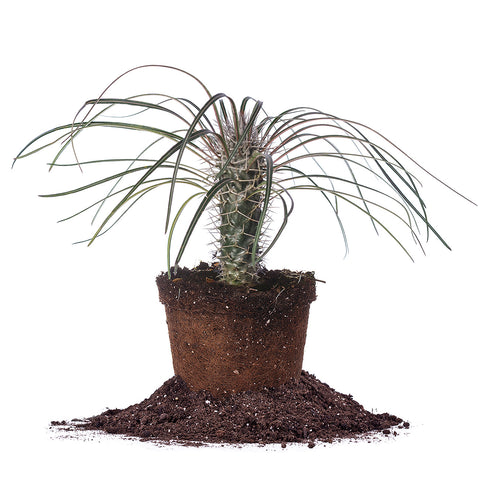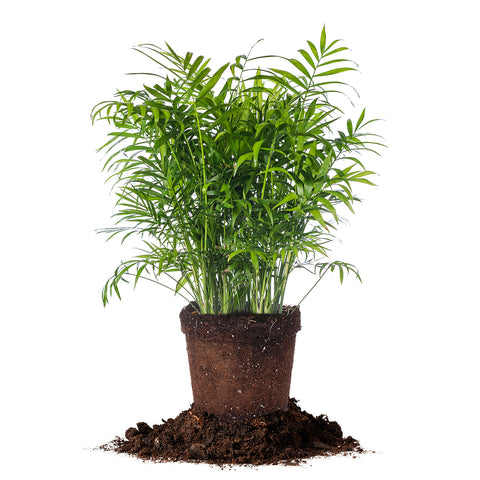Tropical House Plants to Grow Inside
Tropical plants are those that grow naturally in tropical climates: Climates where the average temperature varies little month to month and is always above 64°F (18°C); where frost never occurs, and humidity is high; where there is a greater difference between an average day and night temperatures than there is between average summer and winter temperatures. It is possible to grow tropical house plants inside your home! Read on to find out about tropical plant care.
Best Tropical Plants To Grow Inside




Tropical climates tend to have just two recognizable seasons: Wet and not-so-wet.
Tropical rain forest climates occur in lower elevations north and south of the equator between the Tropic of Cancer (23.5°N) and the Tropic of Capricorn (23.5°S). Even near the equator by South America, the climates of mountainous regions (too cool) and deserts (too dry) are not considered tropical.
 Tropical climate map
Tropical climate map
The cultivation of tropical houseplants requires warmer temperatures and more warm humid conditions than other plants. Most plants that live in tropical rainforests thrive where temperatures never fall below 60°F (16°C)nor above 90°F (32°C). Many grow best in shady or semi-shady locations, out of the direct sun. For these reasons, many tropical foliage plants make excellent houseplants. Even people without a green thumb can grow them!
Tropical Plant Care
Here are some general tips for growing tropical plants indoors in temperate climates. There are exceptions to these rules depending on the type of plant species, of course, but if in doubt, start here:- Use a soilless potting mix and a container with big drain holes for tropical potted plants. They require good drainage.
- Position rainforest plants in bright light, but not direct sunlight. In summer, east- and north-facing windows are best. In winter, when the sun is lower and its rays less intense, west- and south-facing windows are better. Adjust the light by moving plants closer or further from the window or install a translucent curtain.
- Tropicals are more likely to bloom when their light is consistent. Use fluorescent grow lights to maintain consistent lighting. Different houseplants have different light requirements. Be sure to do your research.
 Florescent grow lights are beneficial if you do not get enough natural light. Photo by Tropics at Home
Florescent grow lights are beneficial if you do not get enough natural light. Photo by Tropics at Home - Most indoor tropicals do best with a daytime temperature around 70°-80°F (21°-27°C), and a lower nighttime temperature around 60°-70°F (16°-21°C).
- Allow the potting medium to dry out between waterings, then water until it runs out the bottom drain holes. If it takes more than 10-15 minutes to drain out, the drainage hole is probably blocked. You do not want the plant to sit in standing water. If the water runs out so rapidly that the roots aren’t getting wet, the potting medium has dried out too much. Try submerging the entire pot up to its rim for several minutes. If that doesn’t help, repot with fresh potting mix.
- Water in the mornings so the plant has a chance for the houseplant potting soil to dry out before the cooler temperatures of evening. An occasional deep drenching in the shower or out in the rain will rinse off dust, provide a thorough watering, and leach out harmful salts that have accumulated. Do not wet the foliage of plants with fuzzy leaves. Never allow the pot to stand in a saucer of water. Are You Watering Your Plants Correctly?
- Use distilled water or rain water rather than tap water. Water should be at room temperature. Create a watering schedule so you do not over or underwater. Indoor tropical plants can be finicky when it comes to this and do not like wet feet.
 Tropical house plants do great in bathrooms where there is bright indirect light and high humidity. Photo by Peganum. Licensed by CC.
Tropical house plants do great in bathrooms where there is bright indirect light and high humidity. Photo by Peganum. Licensed by CC.
- The air in most homes can become way too dry for tropical plants, especially in winter. Increase humidity by occasional misting with a spray bottle, running a humidifier, clustering several plants together, and/or standing the container just above (not in) a saucer of water. Put plants in a room that gets more humidity, such as a bathroom or kitchen. Not sure about your humidity levels? Purchase an indoor thermometer that can measure them. They are not too expensive and are usually accurate.
- Don’t mist plants with fuzzy green leaves.
- Fertilize houseplants 2-4 times during the summer; once or twice in the winter months. Follow label directions and do not over-fertilize. Always wet the soil thoroughly before fertilizing. These are slow growing plants that require lots of nutrients to grow to maximum potential. Additionally, you can purchase a slow release fertilizer for year long fertilization. Be sure to mark the date you applied it for next year.
- Check regularly for insect damage and spray the bad bugs with an insecticidal soap.
 Root bound must be re-potted for the health and longevity of the pant. Photo by Barney Livingston. Licensed by CC.
Root bound must be re-potted for the health and longevity of the pant. Photo by Barney Livingston. Licensed by CC.
- Keep your tropical houseplant at an attractive size and bushiness by pinching off longer stems back to a node.
- Repot when plants become root-bound or when water drains straight through without wetting the soil. Do so in spring, before active growth begins.
Some other great houseplants to grow indoors include: Orchids, Succulents, Birds of Paradise, Dumb Canes, indoor Palm trees, Peace Lilies, Pothos, African Violets, English Ivy, Olive Trees and many more!
Tropical plants are easy to grow and easily adaptable to your house.
Check out some other posts about growing plants indoors such as: Bedroom Plants that Help You Sleep, Caring for Indoor Plants, Fighting Indoor Air Toxins
























